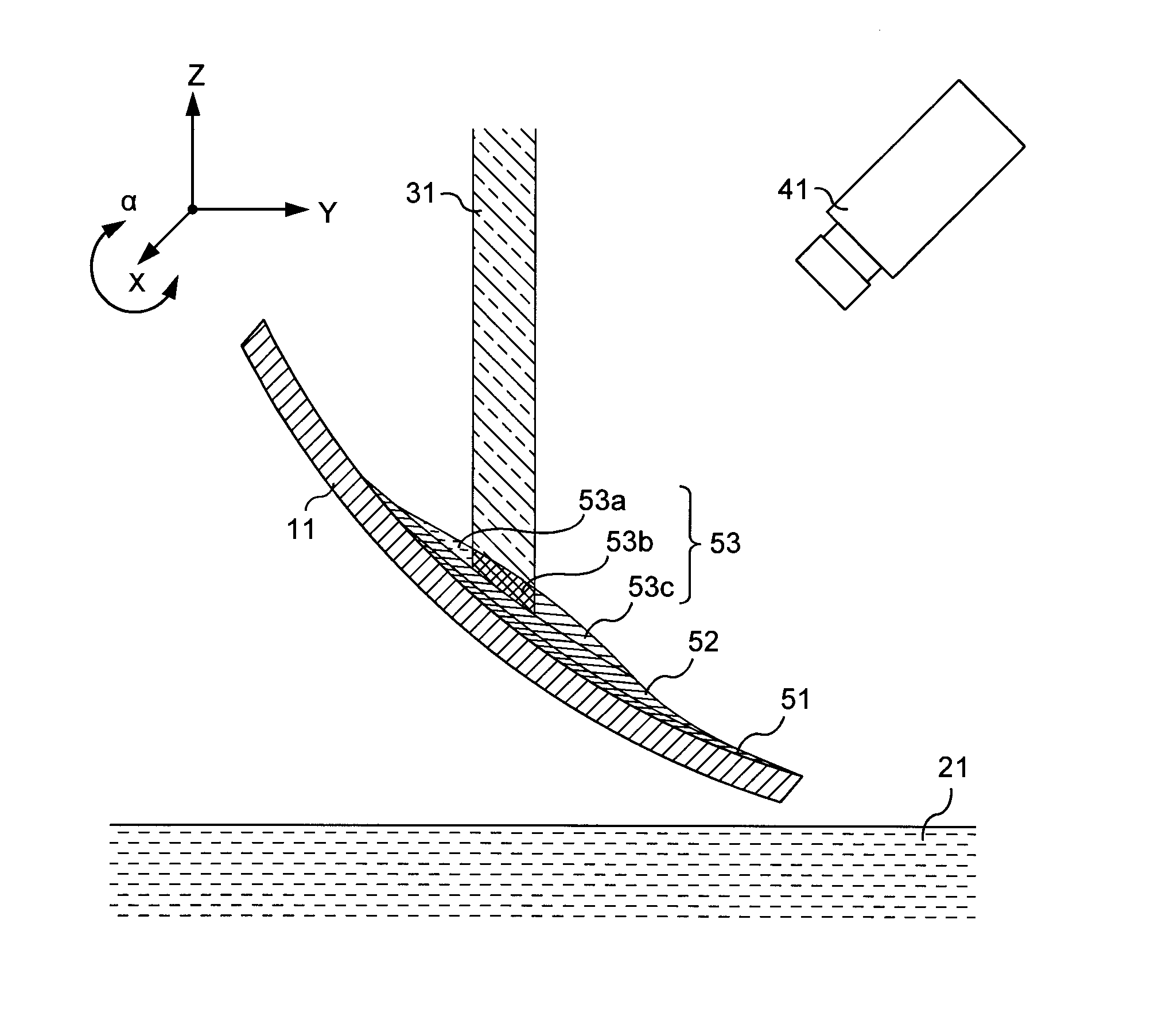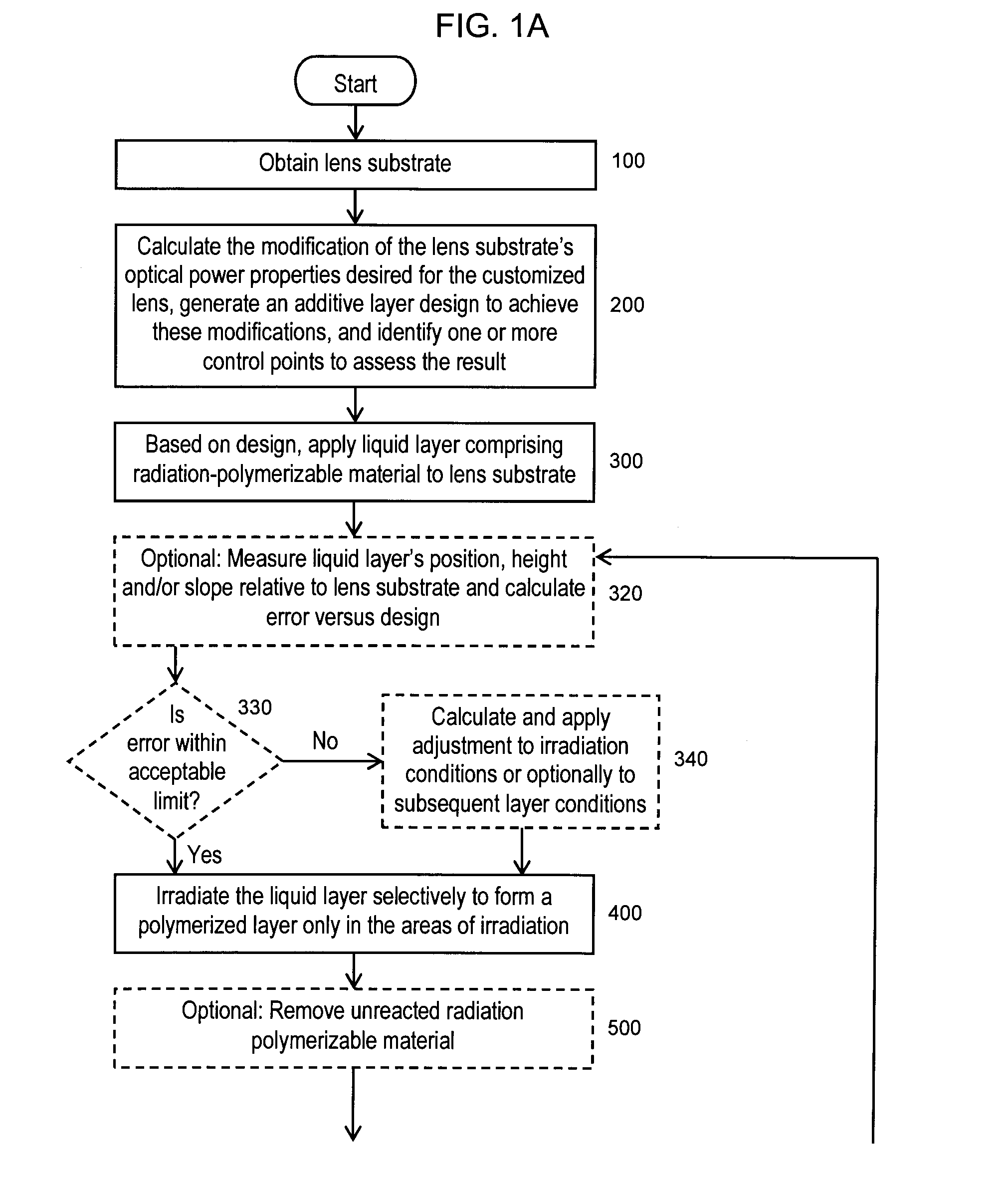Eyewear lens production by multi-layer additive techniques
a technology of additive manufacturing and eyewear, applied in the field of eyewear lens production, can solve the problems of time-consuming process, less accurate correction, and computer-controlled surface equipment that allows more complex (e.g., multifocal) or individualized prescriptions to be prepared
- Summary
- Abstract
- Description
- Claims
- Application Information
AI Technical Summary
Benefits of technology
Problems solved by technology
Method used
Image
Examples
example 1
[0149]A plus powered finished lens substrate is held in a fixed mount such that the concave surface is exposed. (The concave surface of the lens substrate is the surface that will be nearest the eye when the customized lens is worn.) In this Example, an additive layer design is generated with successive additive layers of approximately 10 micrometers thickness each, comprised of one radiation-polymerizable material to be deposited on the concave surface of the lens substrate using a spray coating mechanism. The purpose of the additive layer design in this Example is to form a +2.00 Diopter added optical power region located on a portion of what will be the lower half of the customized eyewear lens when it is mounted in its frame. In this Example, if a lens substrate with refractive index of n=1.5 is used, and the additive layers comprise radiation-polymerized material that has a refractive index of 1.5, then 200 additive layers of approximately 10 micrometers thickness each will nee...
example 2
[0155]A finished plano lens substrate with a finished and polished convex surface is attached to a support mechanism such that the concave surface is exposed for the additive layer process in a configuration such as that illustrated in FIG. 2. The volume of the layers to be built on top of the initial substrate is computed as a series of successive layers with different thicknesses, such that each individual layer is no thicker than 100 micrometers at any point.
[0156]The blue light from an (R, G, B) projector is used to irradiate and selectively polymerize the liquid radiation-polymerizable material for the additive layer design. The red and green channels are specifically chosen to have wavelength distributions outside of the range that can cause reaction or polymerization of the material.
[0157]Before being attached to the support mechanism, the convex surface of the lens is covered with a plastic film (not shown in FIG. 2) that is opaque to the blue light being used for polymeriza...
example 3
[0163]In another embodiment, the support mechanism and dipping method of EXAMPLE 2 is used with a different light source and measurement system. For EXAMPLE 3, an extended, structured light source like an LCD screen is used for irradiation. The camera and the extended light source measure the surface of the liquid close to the concave surface of the lens substrate by triangulation. In addition, the camera and extended light source is used to measure the shape of the polymerized additive layers for any errors, and the position, thickness or slope of the next layers of the additive layer design are adjusted based on the calculated errors.
PUM
| Property | Measurement | Unit |
|---|---|---|
| thickness | aaaaa | aaaaa |
| thick | aaaaa | aaaaa |
| thick | aaaaa | aaaaa |
Abstract
Description
Claims
Application Information
 Login to View More
Login to View More - R&D
- Intellectual Property
- Life Sciences
- Materials
- Tech Scout
- Unparalleled Data Quality
- Higher Quality Content
- 60% Fewer Hallucinations
Browse by: Latest US Patents, China's latest patents, Technical Efficacy Thesaurus, Application Domain, Technology Topic, Popular Technical Reports.
© 2025 PatSnap. All rights reserved.Legal|Privacy policy|Modern Slavery Act Transparency Statement|Sitemap|About US| Contact US: help@patsnap.com



